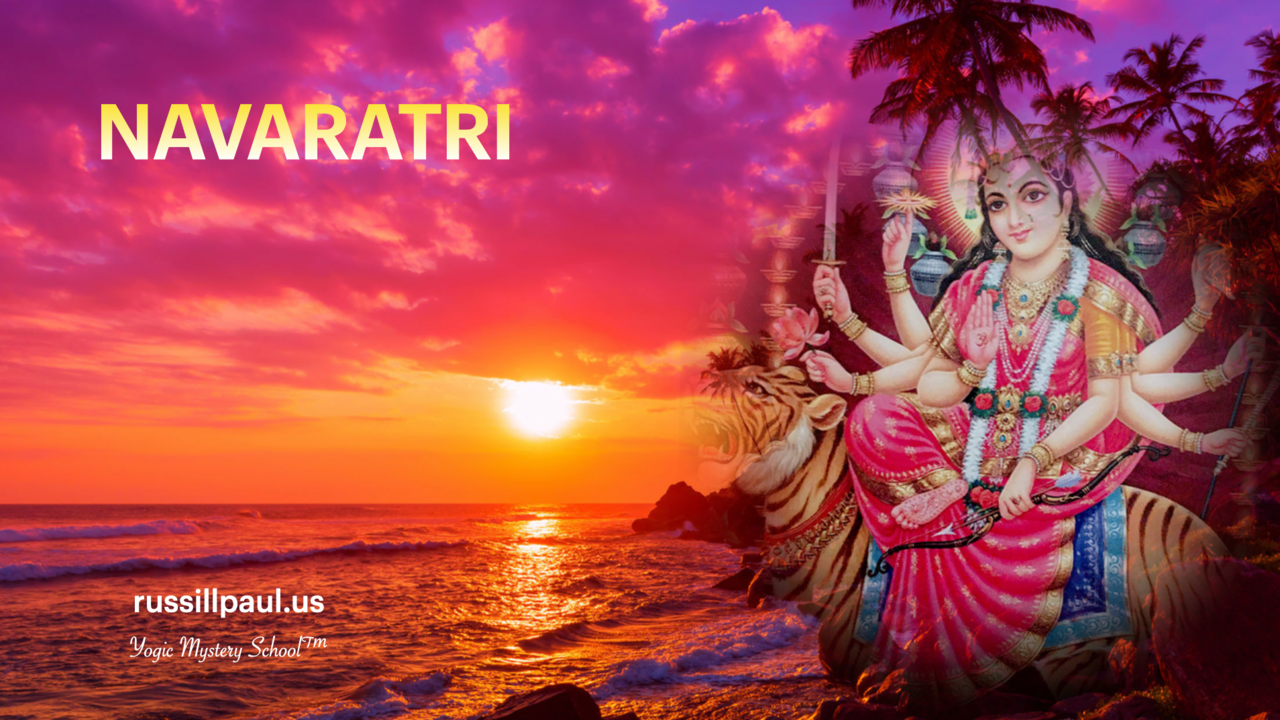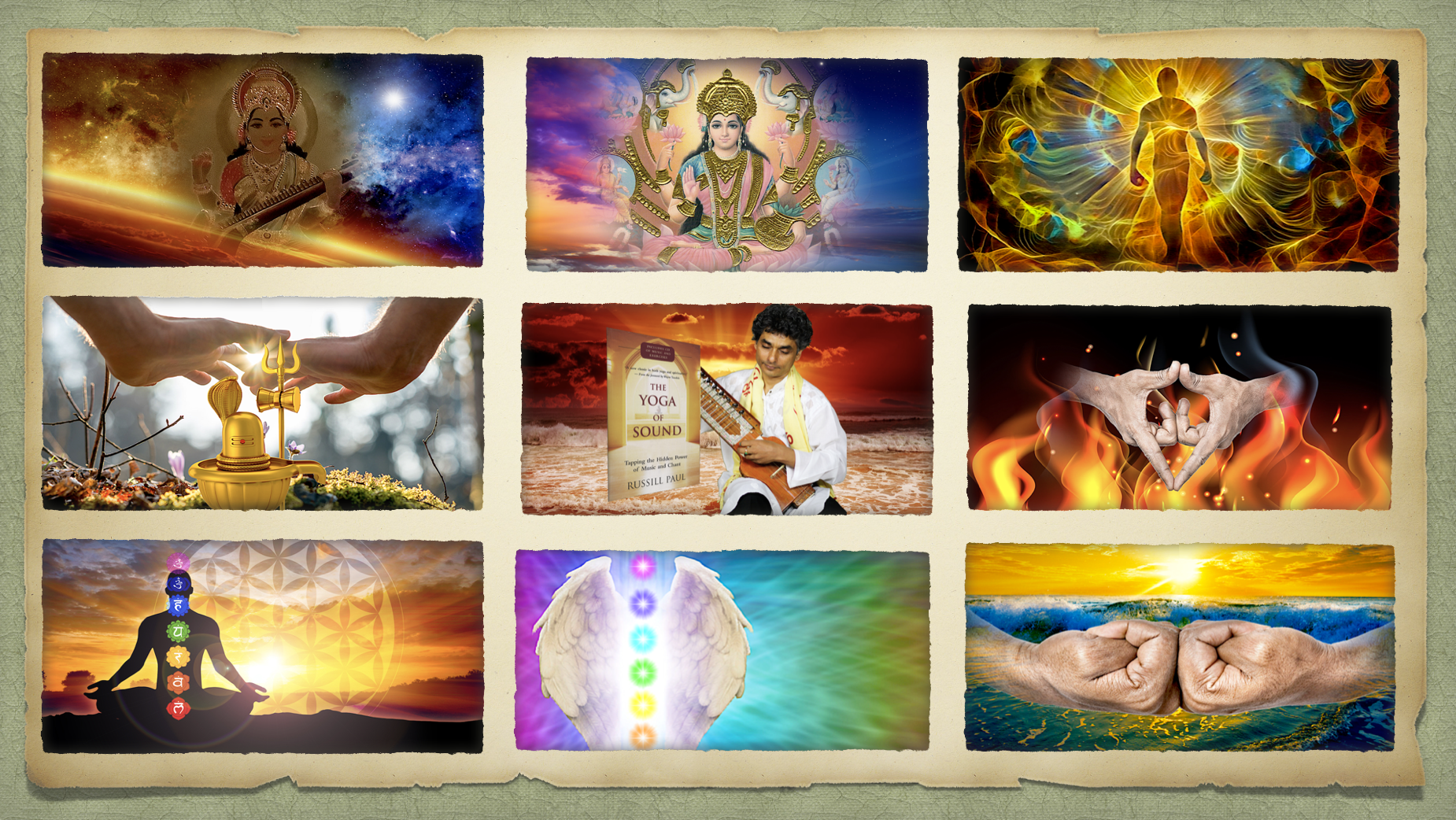Navaratri: Nine Nights Of Shakti

Navaratri means nine nights, an auspicious time of the year to invoke Durga. Durga is a form of the Ultimate Shakti, which is the feminine Godhead. All women (and especially disempowered women) should tap into this identification with Ultimate Reality and the formidable sense of power Shakti conveys.
Shakti is the ultimate principle of life that is both feminine and powerful. Durga represents the formidable power of this Ultimate Shakti, coalesced into symbolic form with multiple arms and weapons and riding a tiger (or lion). She is a warrior goddess whose very name translates as a fortress unto herself.
What's a good mantra practice at this time?
There are three Durga mantras in varying levels of complexity I would like to suggest. These are not necessarily Navaratri mantras; however, they can and will help you tap the power of Durga and the significance of this Shakti at this time.
om duṁ durgāya namaḥ (Tantric Japa Mantra)
That's a good starting point. This mantra develops the absolute reality formula as OM, the seed syllable of Durga (duṁ); the devotion to this aspect of the Shakti (durgāya); and Namaha, the reverence we are offering.
Durgā Sūktam (Rg Veda Mantra)
Even more powerful is the Durga Suktam, a powerful mantra to Durga from the Rg Veda, the oldest living scripture on the planet. It is "living" because it has been chanted in this exact form for thousands of years.
jātavedase sunavāma soma marātīyato nidahāti vedaḥ I
sa naḥ parṣadati durgāṇi viśvā nāveva sindhuṁ duritātyagniḥ II 1 II
tāmagnivarṇāṁ tapasā jwalantīṁ vairocanīṁ karmaphaleṣu juṣṭāṁ I durgāṁ devī(gṁ) śaraṇamahaṁ prapadye sutarasitarase namaḥ II 2 II
agne tvaṁ pārayā navyo asmānthsvastibhirati durgāṇi viśvā I
pūśca pṛthvī bahulā na urvī bhavā tokāya tanayāya śaṁyoḥ II 3 II
viśvāni no durgahā jātavedassindhunnanāvā duritā(a)tiparṣi I
agne atrivanmanasā gṛṇāno(a)smākaṁ bodhyavitā tanūnāṁ II 4 II
pṛtanājita (gṁ) sahamānamugramagni (gṁ) huvema paramātsadhasthāt I
sa naḥ parṣadati durgāṇi viśvā khṣāmaddevo ati duritātyagniḥ II 5 II
pratnoṣikamīḍyo adhvareṣu sanācca hotā navyasca sathsi I
svāñcāgne tanuvaṁ piprayasvāsmabhyñca saubhagamāyajasva II 6 II
gobhirjuṣṭamayujo niṣiktantavendra viṣṇoranusañcarema I
nākasya pṛṣṭhamabhisaṁvasāno vaiṣṇvīlloka ihamādayantāṁ II 7 II
Durgā Gāyatrī Mantra
An intermediate level of mantra is the Durga Gayatri that is also part of the Durga Suktam. This mantra is in the traditional formula of the Gayatri meter, an ancient Vedic meter of twenty four syllables organized in three row of eight.
kātyāyanāya vidmahe
kanyakumāri dhīmahi I
tanno durgiḥ pracodayāt II
If you would like a reference for these three mantras, use the video below as a reference. The easiest of these mantras is the Durga Japa Mantra. Vedic mantras and Tantric practices are quite involved. If this interests you, , however, come and study this type of methodology with us in our Yogic Mystery School. learn more
Sādhana (Spiritual Practice)
Why not undertake a sadhana at this time? Sadhana is a "goal-oriented spiritual practice." It requires both love and discipline.
Hindus throughout the world are engaged in this practice through rituals and a mindset. So why not use this time to be part of the field and be carried by the massive devotion taking place worldwide? Catch the wave. Ride the tiger.
GUIDE TO TANTRA
During Navaratri, you might want to become aware of nine aspects of the Shakti venerated on each of the nine days.
ŚAILAPUTRĪ: This is invoking daughter as a daughter of the mountains. Riding Shiva's bull, a symbol of undying dedication, she holds Shiva's trident in her hand, a symbol of transformative power. The other hand has a lotus, symbolizing spiritual awareness's flowering out of spiritual delusion ambiguity. So we can invoke her for strength and power.
BRAHMACĀRINĪ: This is an austere Shakti holding the Rudrakṣa Māla (mantra beads to invoke Lord Shiva) in one hand, while the other carries the traditional pot (kamandalu) for pujas and worship. She walks unadorned and barefoot. Invoke her for purification.
CANDRAGHANṬHA: This is the formidable form of Durga that we often encounter in imagery like shown in the graphic for this blog. She has ten arms sporting various weapons, and rides a tiger. She is out to destroy ignorance in all its forms. Invoke her for protection.
KUṢMANḌA: We might translate this name as "happy egg," but don't let your typical image of an egg come to mind. The egg here is the universe. We can invoke this aspect of the Shakti for softness and warmth. Let's get cozy with Durga here, shall we?
SKANDAMĀTĀ: This aspect is the mother of the warrior god Skanda, a child of Shiva and Shakti. Ganesha is the other child. Skanda is to be quick, quick in battle particularly. Here, the power is somewhat stepped down with four instead of ten arms that do not hold any weapons. A bell, the water pitcher for puja, and a lotus are what we see. Invoke her for soft power.
KĀTYĀYANĪ: This is one of the most potent forms of Durga. We invoke her through the Durga Gayatri mantra as the daughter of the sage Katyana. She appears when the male gods are unable to shift the balance between good and evil. Therefore, we may invoke her for the most challenging of circumstances.
KĀLRĀTRI: This aspect is rather complicated and might be compared somewhat to the goddess Kali. In this aspect, the third eye is rather prominent, a symbol of omniscience. In an odd combination, she is riding a donkey, symbolic of the unenlightened soul. A distinctive feature is the noose symbol, often associated with the ultimate feminine principle that she uses to draw us into her power. Invoke her for the transformation of shadow.
MAHĀGAURI: This aspect is a shining of presence astride a white elephant. In her hands are the trident of spiritual powers and a drum of creative energies. Invoke this aspect for prosperity as she is somewhat akin to Lakshmi, although she is the Shakti of Shiva rather than Vishnu in this instance.
SIDDHIDĀTRĪ: Invoke this aspect for the bestowal of psychic powers. The ability to be large or small, or any extra-sensory perception that one desires, may be invoked through this aspect of the Shakti. Her distinctive symbols are a mace and discuss, symbols of Lord Vishnu, symbols of power, and the ability to cut through anything. We might interpret these symbols to bear upon aspects of ourselves in need of transformation.





